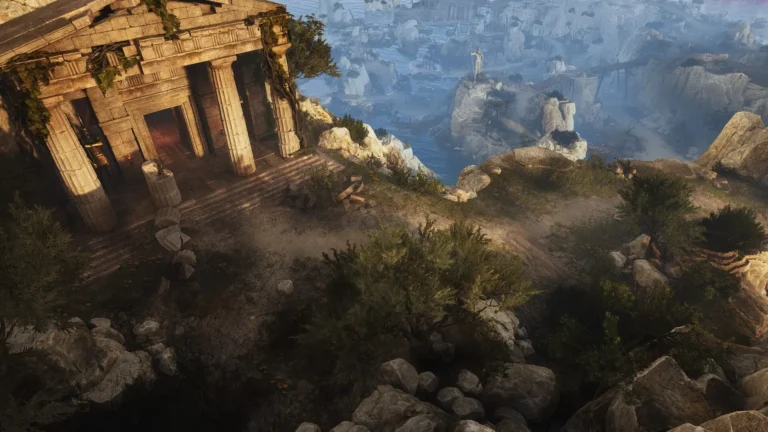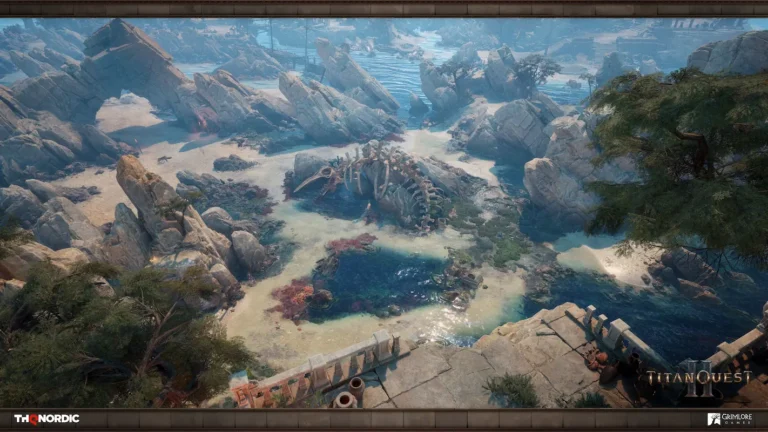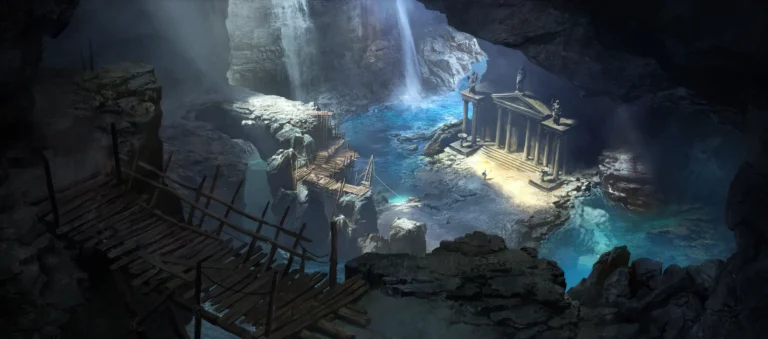Titan Quest 2 is a mythology-themed action RPG where you slash through monsters, level up masteries, and chase loot to keep progressing. If you are just getting started or coming from games like Diablo, Grim Dawn, or Last Epoch, this quick guide will walk you through the basics.
Table of Contents
- What Kind of Game Is It?
- What Is the Story About?
- Masteries, Respecs, and Abilities
- Stats and Attributes
- Inventory, Stash, and Loot
- Using Portals and Fast Travel
- Combat, Exploration, Treasures & Secrets
- Currency, Vendors, and Special Items
- Controls and Quality of Life
- Endgame and Progression
- Beginner Tips & Leveling Advice
What Kind of Game Is It?
At its core, Titan Quest 2 is a classic loot-based ARPG. You build your character by combining two masteries, gear up with meaningful drops, and explore a world based on Greek mythology. There are no random maps, no filler zones, just chapter-based pacing and a world that rewards curiosity.
What Is the Story About?
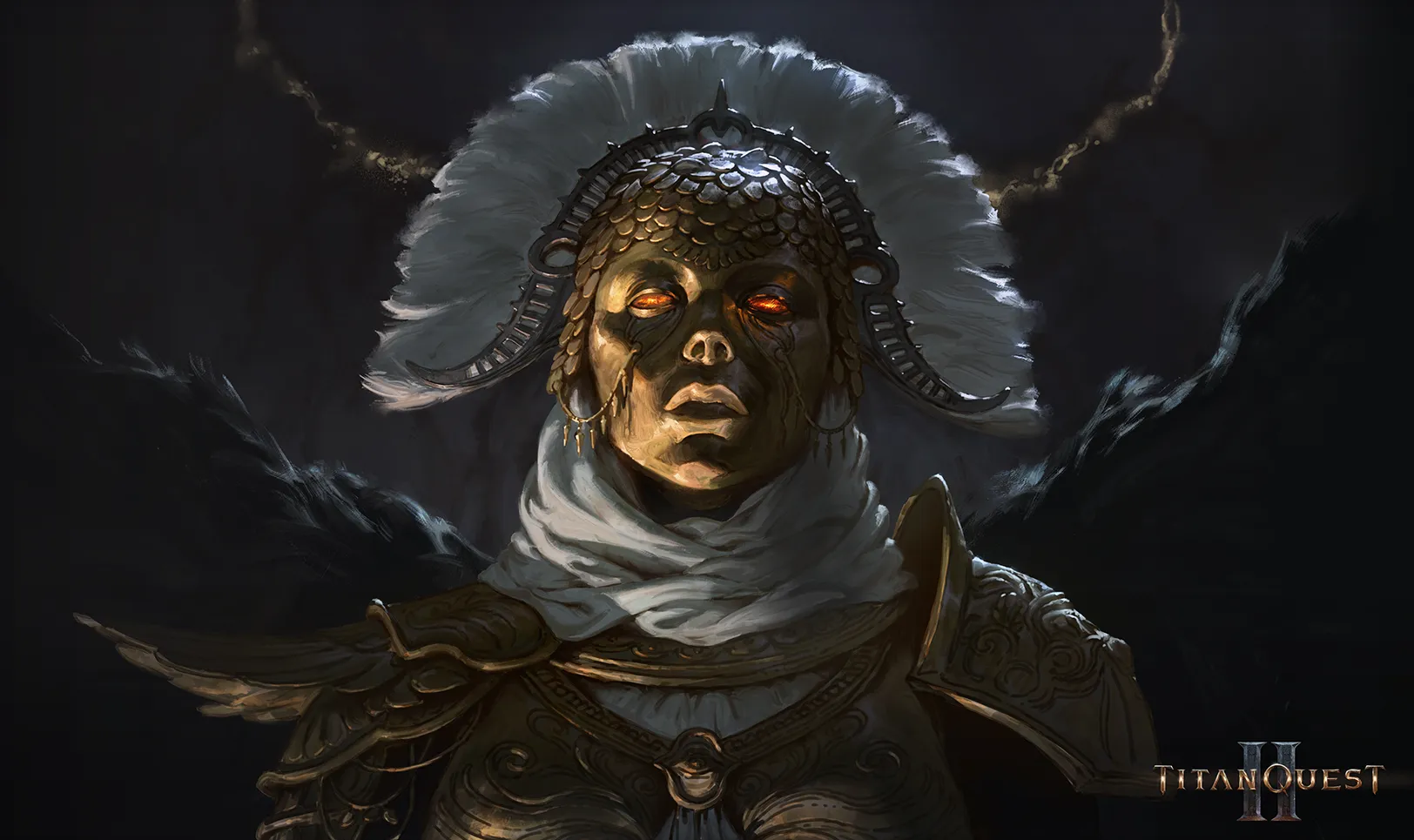
You are up against Nemesis, the goddess of retribution, who is corrupting the Threads of Fate. That basically means the world is falling apart, and you are stuck right in the middle. The story unfolds through main quests, side quests, and exploration-based events you can stumble into while wandering off the obvious path.
Masteries, Respecs, and Abilities
TQ2 uses the same dual-mastery system that the first game was known for. You pick two masteries to create your class and unlock a mix of core abilities, active skills, and passives. For example, you can go for a Storm + Warfare hybrid for a lightning-charged warrior, or something more caster-focused like Storm and Earth. Furthermore, you can change your build on the fly, so you are not locked into one playstyle.

Divinity Points
You will also earn Divinity Points that let you increase the power of your chosen masteries (these points scale with your progression and unlock deeper tiers of your mastery trees). You gain Divinity by leveling up, completing Divine Challenges, and sometimes through quests. To see your current Divinity progress, take a look at the bar on the left side of your mastery menu.
Types of Abilities
Abilities in Titan Quest 2 are split into three types:
- Core abilities: Your base skill path for a mastery, sometimes with unique modifiers.
- Active abilities: Skills you trigger manually, leveled by spending active points.
- Passive abilities: Always-on effects that boost your combat stats or utility.
Skill Modifiers and Capacity
As you level up Active Skills, you gain Skill Capacity that lets you assign powerful Modifiers to further customize them. You can always respec them later if you change your mind.
Respeccing and Ritual Shrines
Talking about changing things: you can respec at any time. Open the Mastery menu and hit Respec Mode to refund points, or visit a Ritual Shrine in town to refund attribute points, reset difficulty (for example, if you want to repeat a chapter on harder settings), or respawn enemies in the world for gold.
Stats and Attributes
You spend points on Primary Attributes like Agility, Vigor, Might, and Knowledge. These increase your ability to equip better gear and boost your Secondary Attributes, which in turn scale your damage or survivability.
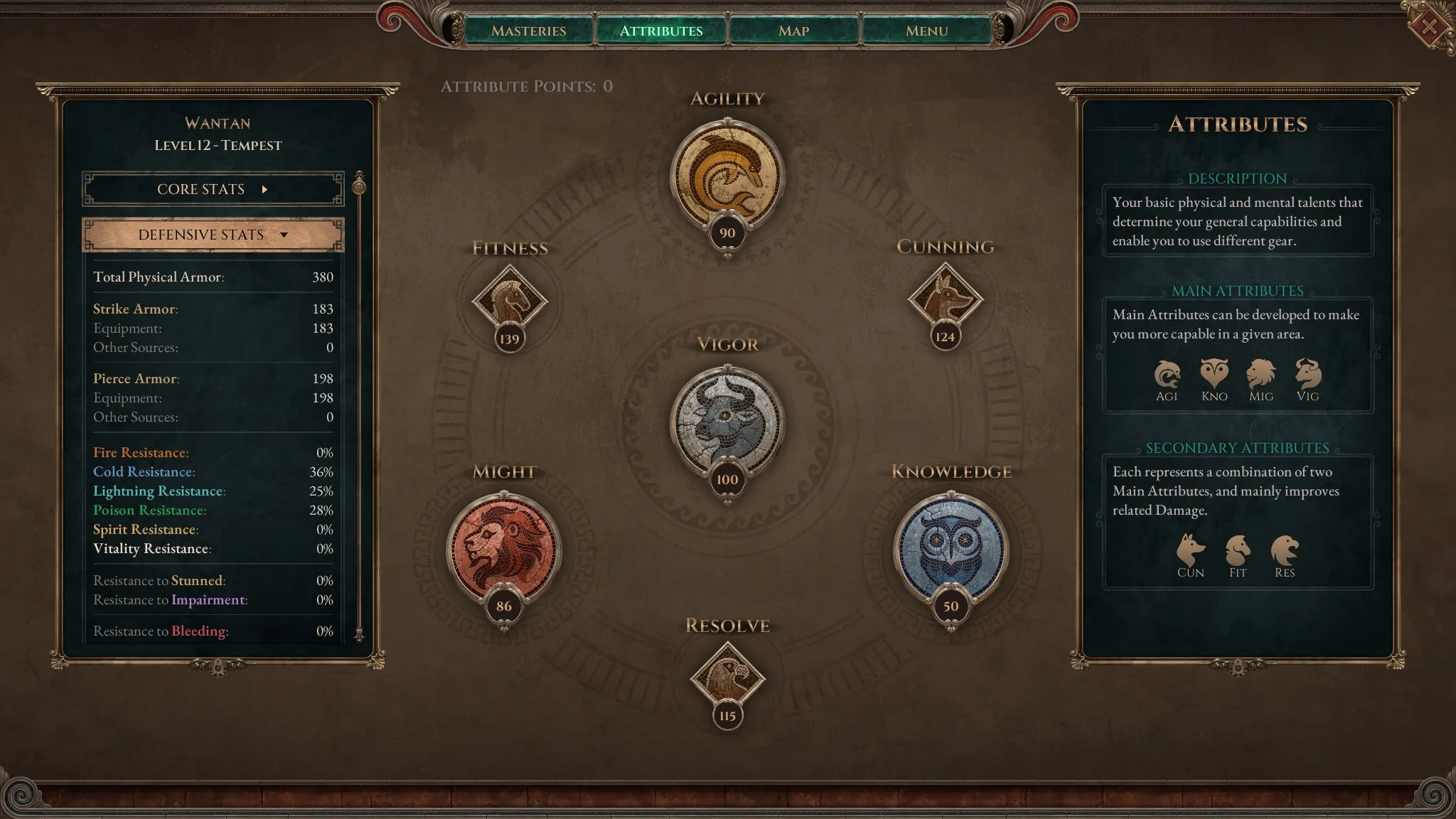
There are four main attributes:
- Agility
- Vigor
- Might
- Knowledge
These feed into secondary attributes like Cunning, Fitness, and Resolve, which affect various different stats such as your crit, survivability, and damage scaling. You can view all your detailed stats in-game (core, offensive, defensive, ailments, and resistances) by opening your character screen and clicking the Details tab.
If you want a more detailed explanation of how damage types, resistances, or skill scaling work, check out our Titan Quest 2 Game Mechanics Guide.
Inventory, Stash, and Loot
Your bag has more than just gear space. There is also a separate Repository tab for quest items and event-related loot, so your main inventory stays clean. Very useful once you start picking up multiple side objectives. Basically, the inventory is split into a few different tabs:
- Your regular loot bag
- A separate Repository for quest items and story-related stuff
- A stash in town, where you can store extra gear and buy more tabs if you need
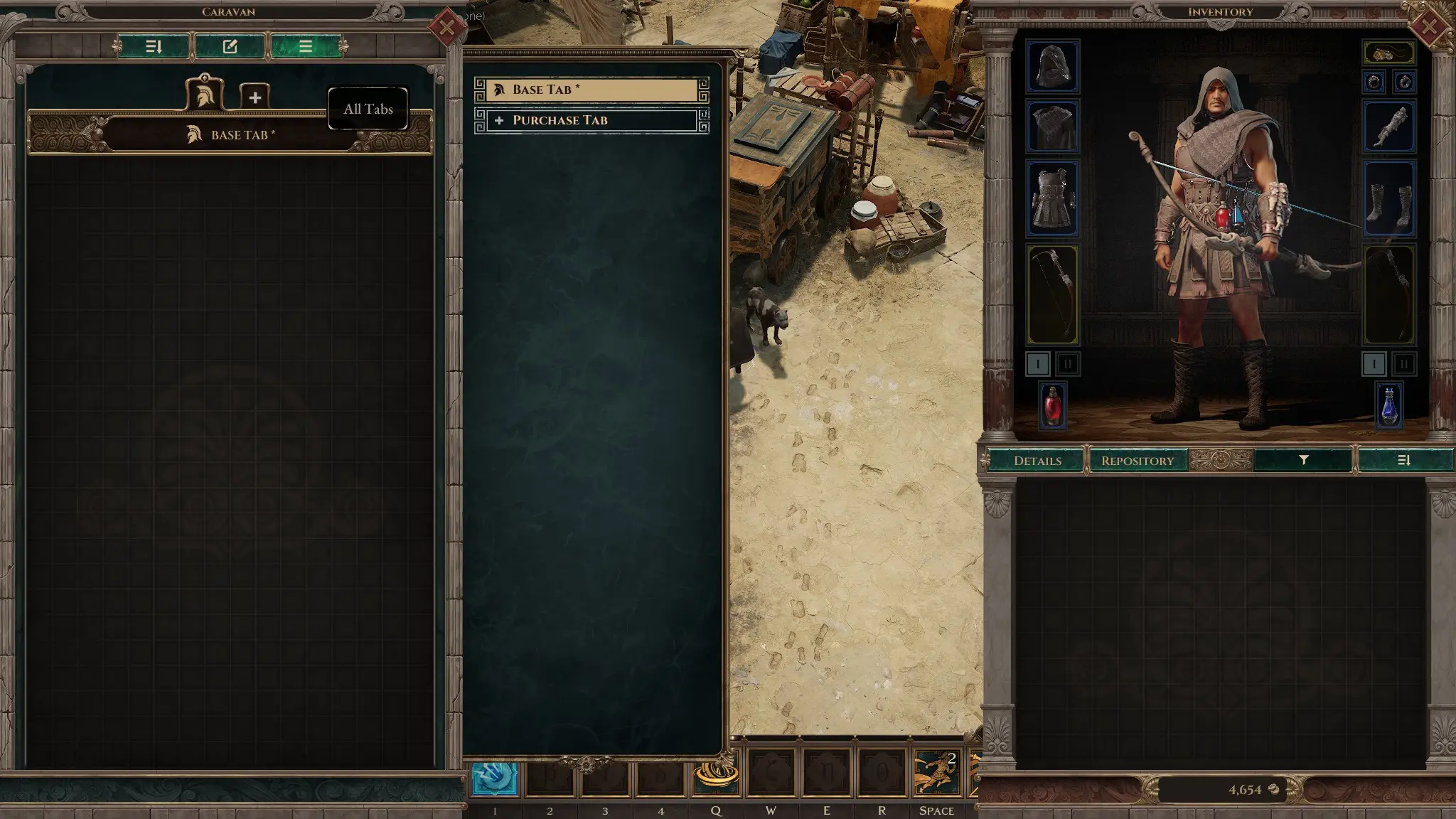
Loot works the way it should in an ARPG. Item stats matter, gear combos make a difference, and you will be swapping things out often, especially early on.
Loot Rarity
Loot in Titan Quest 2 comes in several rarities, and each one affects how powerful or unique an item is. You will find everything from basic white gear to themed epic drops with special effects.
- White (Common) – Basic items with no modifiers. These usually just provide base stats like armor or flat damage.
- Blue (Magical) – Items with a single modifier. These are a slight step up and may include minor resistances or stat boosts.
- Yellow (Rare) – Items with multiple random modifiers. Great early-game pieces with a mix of offense, defense, and utility.
- Green (Infrequent) – Special drops from monsters or thematic sources (e.g., specific enemies or factions). These have fixed affixes and usually include extra resistances or effects like bonus barrier, damage types, or utility stats. Some are handcrafted or lore-themed.
- Purple (Epic) – High-tier items with fixed affixes and sometimes unique effects that trigger under certain conditions (like AoE bursts or bonus buffs).
Item Families and Visuals
Each item also belongs to a family, which affects its visuals, like the blade and hilt being modular for weapons, and some families have innate bonuses depending on the enemy type or region they drop from.
Higher rarity means better gear, but also lower drop chances.
Crafting is not in the game yet, but is likely still planned for a future update.
Using Portals and Fast Travel
Fast travel is in, of course – just like most other ARPGs, it is a must for moving between maps or chapters quickly.
- You have a Personal Portal you can open anytime by pressing L (this key can be rebound in the controls menu settings). It lets you quickly return to town or a vendor.
- Waypoints are scattered throughout the world and unlock fast travel once discovered.
- When you return to town through your portal, you can go back to where you left off by selecting your portal again from the waypoint list.
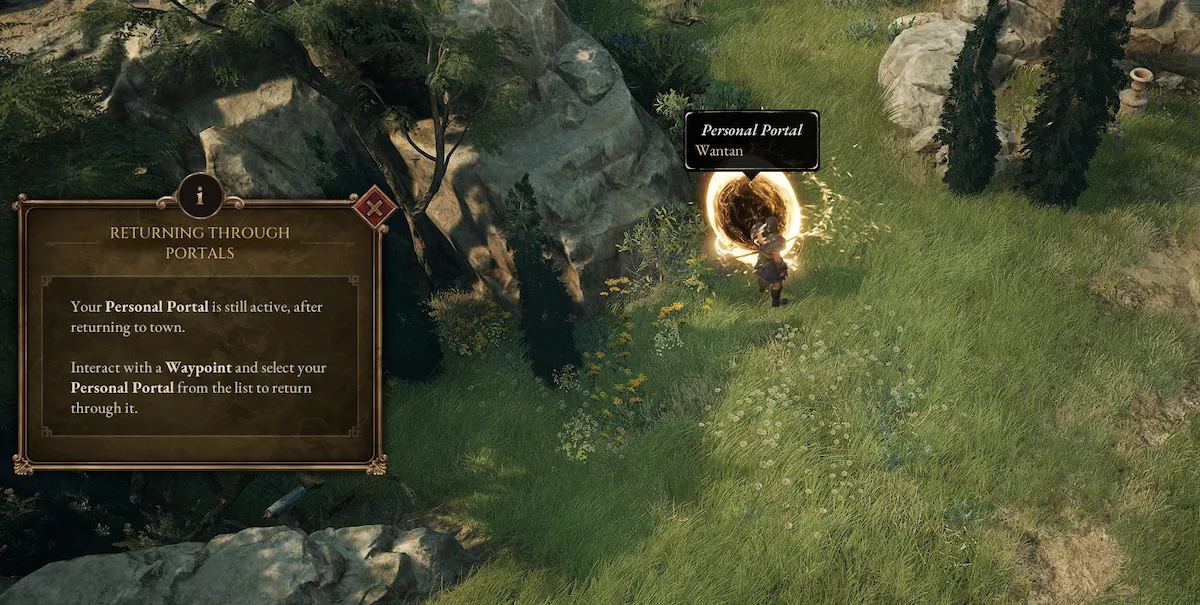
Combat, Exploration, Treasures, and Secrets
Combat is very interesting, as enemies often fight in factions. For example, Ichthians or undead groups will use different roles like snipers or healers. Make sure you do not just stand in the middle of a pack, as it can get dangerous and overwhelming very quickly.
Potions and Defense Tools
Health potions are regained by dealing damage to enemies, and Energy potions regenerate over time rather than instantly. You also have access to a Barrier Skill (Q key by default) that boosts your defense temporarily. Equipping a shield or wearing warded armor makes it even more effective.
Exploration and Secrets
The World of TQ2 is handcrafted and rewards curiosity. You will find hidden treasures, vertical paths you can climb, side areas that lead to secret rooms or bosses, and even small puzzles.
- You can climb, drop down, and use vertical paths in many areas.
- There are hidden chests and side events tucked behind broken walls, small cliffs, or alternate paths.
- Some areas have light puzzles, like lighting up all braziers to open a secret door or trigger loot spawns.
- If something looks out of place, it is probably hiding something.
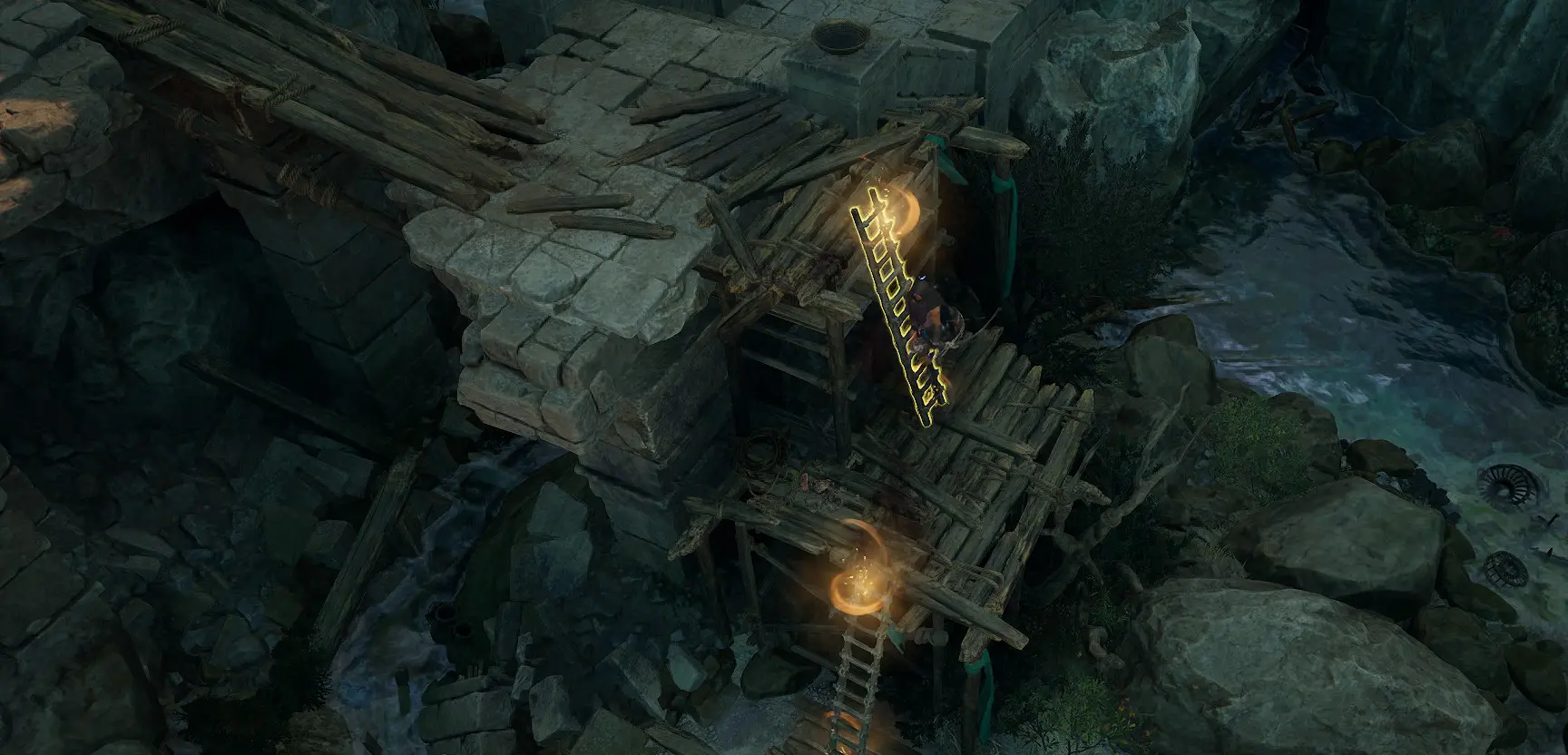
In the Flooded Farmlands, for example, you will face Ichthian enemies that do not just charge at you – they coordinate attacks, flank, and heal each other. Boss fights, like the mythic Hippokampos you will encounter during early access, are a good indicator of how each chapter builds up a themed combat challenge.
Currency, Vendors, and Special Items
Towns in TQ2 are more than just your break between fights. You can trade, sell or buy gear, and even exchange special currency for better loot.
- Besides gold, you will also find Embers of Night, which is a currency you can exchange for rare items at a vendor marked “Ancient Embers” on your map.
- Vendors include a blacksmith, general gear sellers, and more.
- The Scholar of the Ancients is the one you want for turning in Embers of Night.
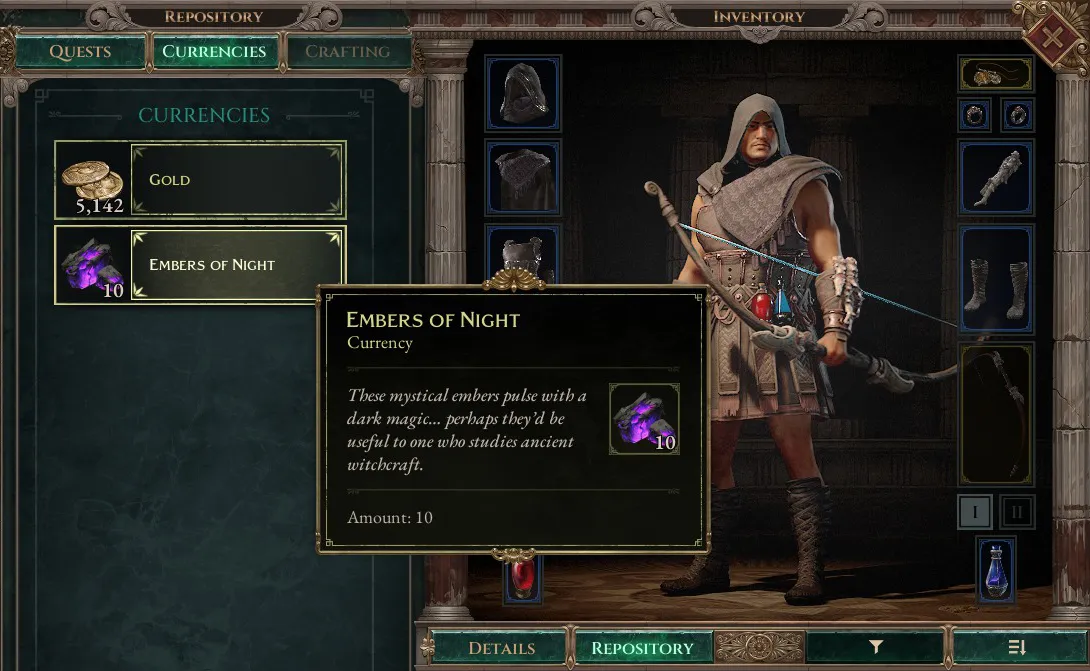
Controls and Quality of Life
TQ2 also has a bunch of useful features right from the start. Alongside the usual QoL stuff like dodge/dash, there are a few other handy things worth knowing:
- Auto-pickup for gold is on by default
- Press Spacebar to dodge attacks or reposition. You can use it for mobility or to avoid big hits.
- You can weapon swap between two loadouts – great if you want melee on one set and ranged or spells on the other.
- The Quest Log lets you filter between all quests and only active ones.
- Everything is rebindable in the Controls menu – including movement, skill keys, potion slots, and interaction.
Endgame and Progression
Right now, Titan Quest 2 is structured around a chapter-based campaign, with exploration events, wave-based challenges, mini-bosses, chapter bosses, as well as side quests along the way. Difficulty scaling and challenge adjustments can be done at Ritual Shrines, where you can even respawn enemies in cleared areas if you want to farm or test new builds.
More traditional ARPG endgame systems like randomized dungeons, boss rushes, or other similar ‘events’ have not been fully confirmed yet, but difficulty scaling, build diversity, and exploration are already core to how the game plays.
Beginner Tips and Leveling Advice
Getting started in Titan Quest 2 is pretty straightforward, but there are a few things that will make your first hours feel even better – and help you avoid some common pitfalls.
Masteries and Builds
- Do not overthink your first two mastery picks. Just pick what sounds fun – you can respec easily.
- Try a focused combo like Storm + Warfare if you want an easy starter.
- Stick to one damage type early on (e.g. all Lightning or all Ice). Mixing too much will spread your power too thin.
- Respecs are quick and ‘cheap’. Change your passives, swap your element, or rebuild your loadout – no reason to stay stuck in a build you are not enjoying.
Loot, Gear, and Inventory
- Pick up everything early. Sell junk for gold and stash any epic or high-rarity gear you are not using – great for future builds.
- Upgrade your weapon often. It is the biggest damage boost, especially for skill scaling.
- Keep a few resistance pieces in your stash. Some zones or bosses hit hard with a specific element.
- Explore everything. Break pots, open chests, and poke around odd corners – some hidden chests drop 20+ items at once.
Progression and XP
- Kill everything. Trash mobs give easy XP and can drop great items.
- Do side quests and optional bosses. They are worth it – some give big rewards or teach you how to deal with real boss mechanics.
- Passive points matter. Survivability passives like +HP or resistances go a long way, especially early on.
- Use Ritual Shrines to reset enemies, refund points, or raise the challenge if things are too easy.
- You can also use the “reset enemies” mechanic to farm monsters or a specific area over and over.
Travel and QoL
- Your personal portal (L by default) is free and reusable. Use it often to save time.
- Weapon swap is great for build flexibility – try melee on one bar and ranged or spells on the other.
- Use your stash to store good gear for other builds.
- Visit the Ancient Embers vendor in town to exchange Embers of Night for better loot.
If you want a more focused breakdown on how to level up quickly and efficiently, check out our full Leveling Guide for Titan Quest 2 – it also links to all our current starter builds.
For other Titan Quest 2 guides, updates, and more, make sure to visit our main TQ2 news hub here.

